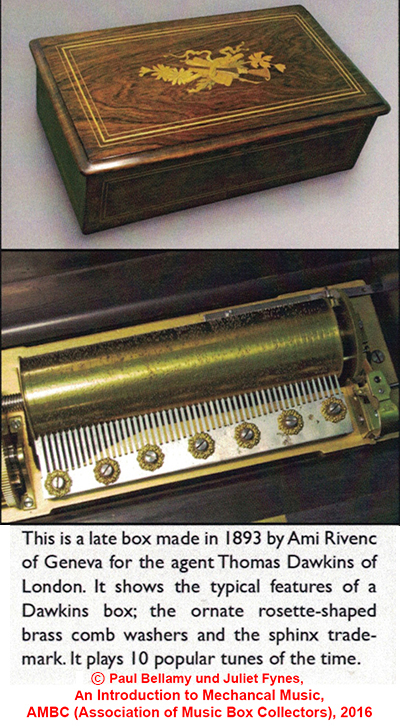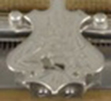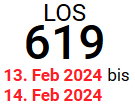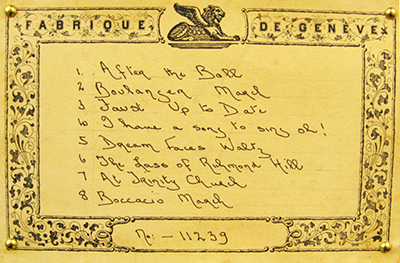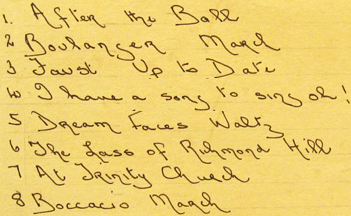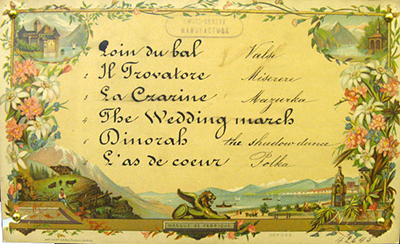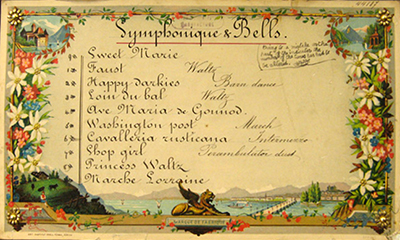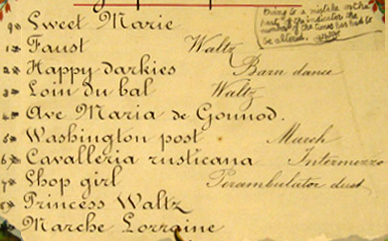|
Thomas Dawkins, London agent of music boxes of Ami Rivenc, *?, established 1855, †1879, wife Rosetta Weisbart Dawkins, *1819, †1899, Thomas Dawkins junior, *?, †1914 17 Charterhouse Street, London, and, by 1914, 205-7 City Road, London, E.C. Much mystery has surrounded the Dawkins business and in particular, its involvement with musical boxes. Thomas Dawkins & Co. was established in 1870: an article on the company in Musical Opinion at the time of the death of Mrs. Dawkins gives the date of foundation of the business as 1781, but Dawkins´s own advertising states that the business was established in 1755. What is certain is that the business was originally that of music string maker and that it was founded in Frankfurt-am-Main under a name now lost. Thomas Dawkins married the daugther of the founder and, upon his death, Dawkins moved the business to London and added the importation of musical instruments. These were primarily military band instruments. Thomas Dawkins died in January 1879 and his wife, Rosetta Weisbart Dawkins, died on 21 April 1899, in her eightieth year. The business was by now carried out under the auspices of Thomas Dawkins junior, who became sole proprietor, and finally ceased about 1914. Musical boxes were a long-lived line with Dawkins and these bore the trademark of a sphinx-like animal looking to the left, stamped on the cock bracket. Tune sheets bore a representation of a similiar animal, but this time it looked to the right. The comb screws almost always had very large diameter rosette-like washers punched in relief out of thin brass. The cylinders usually had raised bezels at each end which were knurled. Cylinder musical boxes came in a wide variaty of shapes, sizes and styles, among these being a vertically mounted movement with a pair of hinged front doors – the cylinder remaining horizontal. This was known as the buffet style. Somewhat cheaper boxes were also factored but almost always the music was well set up and well presented both in appearance and arrangement. Although Dawkins claimed to have manufactured boxes, and in spite of previous investigations which have led some measure of support to the claim, it is now established that Dawkins was not a musical-box maker, but that he sedured his wares from Rivenc, Ami and fitted these movements into London-made cases. Because Ami Rivenc boxes are scarce in Britain, it seems as though Dawkins may have secured the UK rights for Rivenc´s boxes. The trademarks and features described are all found on Rivenc products elsewhere and Suzanne Maurer has traced the history of the trademark (MBSI Bulletin, col. 22, p. 177). Rivenc seems also to have supplied his boxes either direct or through Dawkins to the National Fine Art Association of Farringdon Road, London. These bore a special oleograph tune sheet with the name National Music Box and a large display of coloured flowers. The National Fine Art Association was in the same building as John G. Murdoch and there may have been some connection. Rivenc-made Dawkins-attributed boxes remain good, well set up and generally possessed of a bright sound. (Ord-Hume, Musical Boxes, p. 300)
No s/n [1], No s/n [2], N° 11239, N° 41491, N° 42645, N° 44187 No Serial Number [1]
No Serial Number [2]
Thomas Dawkins Mandolin Musical Cylinder Box,
N° 11239
©Freeman1127 N° 41491
©Freeman1177 N° 42645
©Freeman 1065 N° 44187
©Freeman 1101
|
